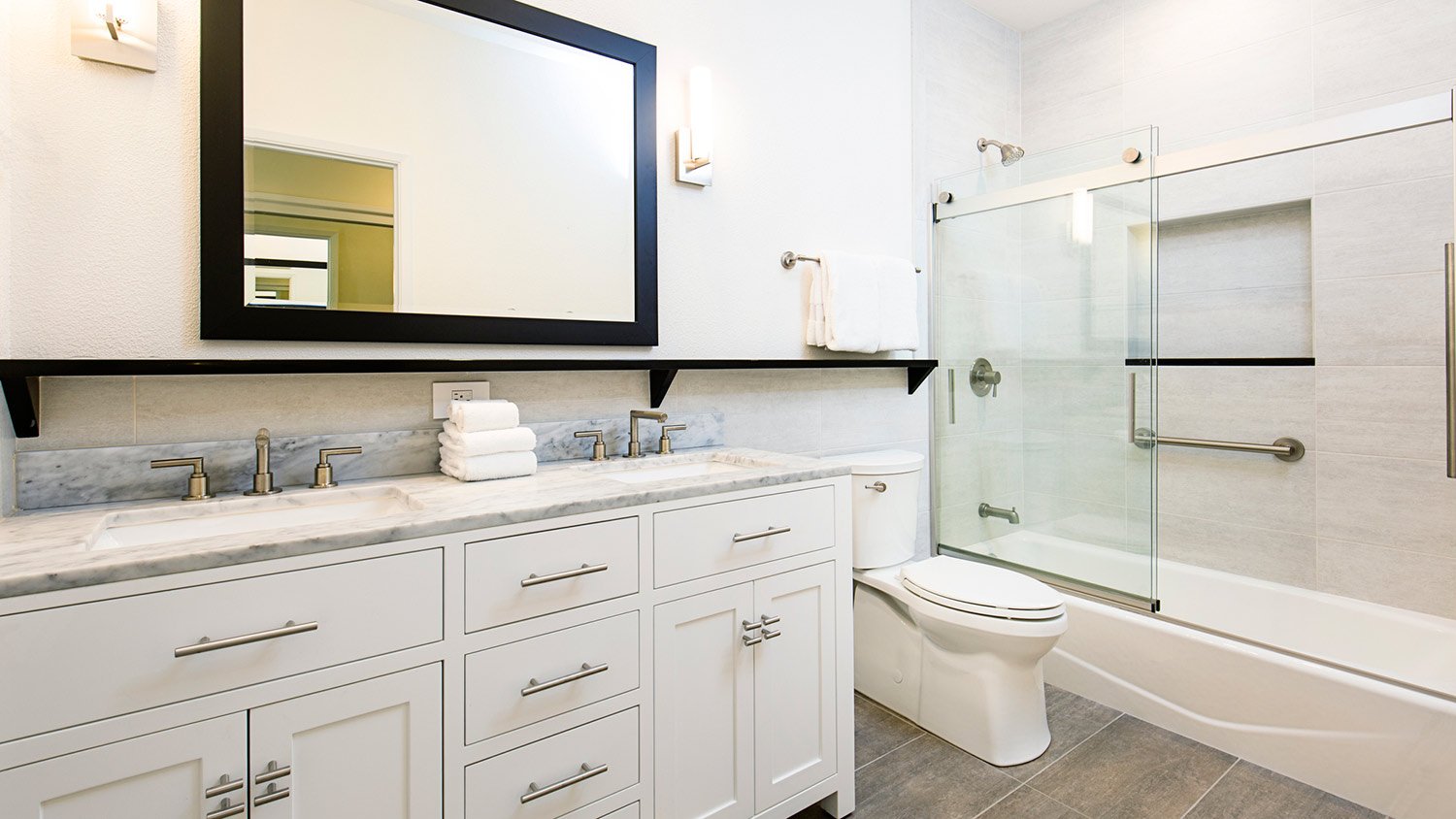
Clean walls are an important part of a well-kept house. Use this wall cleaning cost guide to see what it would cost to hire a professional to get the job done.
Clean your toilet tank to prevent damage from rust and hard water deposits


When most homeowners think about cleaning their toilets, they give all of their attention to the bowl. Unfortunately, that means the tank—the back of the toilet that holds the water in reserve for flushing—often gets neglected, and mineral buildup and rust can contribute to problems with functionality and can reduce the toilet’s life span. In this guide, we’ll discuss how to clean a toilet tank to prolong its life and keep your toilet flushing like it’s new for years to come.
Using a common household item like white vinegar is one of the easiest ways to clean your bathroom, but it’s important to note that acidic solutions like vinegar can promote rust on the metal components in your toilet tank. If you open your tank and notice an issue with rusting, you may want to skip steps that involve letting vinegar soak in your tank. Instead, you can call a pro to remove stains in your toilet without damaging your toilet components.
Additionally, if you have a toilet tank that’s located behind the wall, you should leave the work to a professional. They have the tools and supplies necessary to clean the inside of the tank without damaging the components you can’t assess beforehand.
Your first order of business is to shut off the supply of water to your toilet temporarily; otherwise, you won’t be able to keep it empty while you clean. Look for a metal braided pipe leaving your toilet and connecting to the wall. This is the water supply line.
Find the small valve where the tube connects to the wall (called a speedy valve) and close it by turning it clockwise.
With the valve shut off, you can now flush the toilet, and the tank should remain empty. You might need to hold the handle down until all the water drains out of the tank.
Remove the lid from the toilet tank and take a look inside. You should look for rusted metal components, red stains around the inside of the tank—particularly near where the water level normally sits—and mineral deposits. If you notice any of these issues, you’ll need to set aside some extra time for scrubbing the tank clean.
Spray the inside of the tank with a disinfectant cleaner or mix a 1-to-1 ratio of white vinegar and cold water in a spray bottle and use that instead. If you’re using a commercial cleaner, try to avoid spraying the toilet lift chain or other metal components. In either case, let the solution sit on the surface for about 10 minutes.
Pour some clean water into your toilet tank to rinse away any residual cleaner or vinegar. You can also open the speedy valve again, let it refill, close the valve, and flush to empty the tank again.
Once the tank is empty, dip your scrub brush in some white vinegar and scrub down the inside walls of the tank. You can sprinkle some baking soda before scrubbing or scrub the toilet with a pumice stone for a deeper cleaning. Pay particular attention to any areas where you noticed mineral buildup during your tank inspection. Aim to get all the minerals off of your tank walls.
Next, spray some disinfectant cleaner on the other components, including the flapper at the bottom of the tank and the float. You don’t have to worry about hitting the metal parts this time, as you won’t be letting the cleaner sit for long.
Scrub all the components gently with a sponge or your cleaning brush.

Finally, turn the water back on using the speedy valve. Let the tank fill, and then flush it to get rid of any cleaner, vinegar, and mineral deposits you scrubbed off of the tank. Let the tank fill a second time and flush again to make sure all the cleaning solutions are gone. You might need to dump some clean water on the parts of the toilet that stick out of the water when the tank is full to get any residue off.
Cleaning your toilet tank is a simple home improvement project, so you can absolutely do the work yourself to save some money over hiring a professional house cleaner near you. In most cases, you can get the job done with things you already have in your home, too, so the cost savings are even greater.
There are some cases where the cost of a professional house cleaner is well worth it. If your toilet tank has heavy mineral or rust buildup, you might need to use a harsher cleaning product to solve the problem. Unfortunately, some commercial cleaners—including bleach and ammonia—can kill the necessary bacteria in septic systems. If you’re connected to a septic tank or you’re unsure if you are, we recommend leaving the cleaning to a professional to make sure the issue is solved without causing more problems in your septic tank.
Additionally, if you notice problems with your toilet tank while you’re cleaning, we suggest calling a plumber near you rather than cleaning and ignoring the issue. Some problems that might demand a professional plumber include the following:
Your tank continues to fill even with the speedy valve shut.
You notice that the flapper at the bottom of the tank isn’t creating a perfect seal.
You find damaged interior components, like floats and lift chains.
You find excessive rust inside your tank.
From average costs to expert advice, get all the answers you need to get your job done.

Clean walls are an important part of a well-kept house. Use this wall cleaning cost guide to see what it would cost to hire a professional to get the job done.

Cleaning your washing machine semi-regularly is important to your machine’s efficiency. Learn how to sanitize and disinfect a washing machine with bleach.

Mattresses can trap dust mites, sweat, and dirt. Learn how to clean a mattress to reduce allergens and extend the life of your mattress.

How often should you deep clean your house? Learn what timing factors to consider before deep cleaning your home.

Learn how to prepare for a house cleaner to ensure whoever you hire can do their job properly while you keep your home, family, and possessions safe.

Life is messy, but when it comes to pee in the house, it takes on a whole new meaning. Read this to learn how to get urine smells out of your couch.